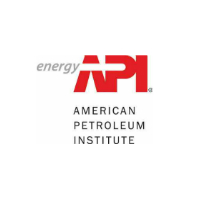API: Oil and Gas Infrastructure Could Create 1 Million Jobs

API has released a new study that shows private investment in U.S. natural gas and oil infrastructure could create more than 1 million U.S. jobs.
API contracted with ICF to analyze the scope of the economic opportunity and the amount of oil and natural gas infrastructure development likely in the U.S. over the next two decades. According to the study:
- Up to a million jobs could be supported
- Up to $1.34 trillion in private natural gas and oil infrastructure investment could occur
- Up to $1.89 trillion could be added to the U.S. GDP.
- All states would see advantages, including:
- Ohio: energy infrastructure investment could support on average more than 48,000 jobs per year and generate more than $95 billion to the state’s GDP through 2035
- New York: Investments in energy infrastructure could support an average of more than 40,000 jobs per year and add more than $85 billion in GDP growth
“By 2035, if the right regulatory policies are in place, private investment could exceed $1.3 trillion for oil and natural gas infrastructure, and create more than 1 million jobs,” said Kyle Isakower, API vice president of regulatory and economic policy. “Already, reliable access to energy has helped drive down utility, product and other energy-related costs providing a $1337 boost to the average American household in 2015. U.S. industrial electricity costs are 30-50 percent lower than those of our foreign competitors, giving manufacturers – including producers of steel, chemicals, refined fuels, plastics, fertilizers and numerous other products – a major competitive advantage.”
Robin Rorick, API’s midstream and industry operations group director, says private investments in oil and gas infrastructure will also help continue to reduce carbon emissions and sustain America’s position as a global energy power.
“The United States leads the world in carbon reductions thanks primarily to greater use of natural gas,” said Robin Rorick, API midstream and industry operations group director. “Carbon emissions from power generation have plunged to nearly 30-year lows, and more than 60 percent of those reductions from 2005 to 2016 have been the result of switching to generation from clean-burning natural gas. By moving forward with private investments in U.S. natural gas and oil infrastructure we can ensure that the United States has the critical framework to sustain America’s energy leadership.”
Related News
From Archive

- Glenfarne Alaska LNG targets late-2026 construction start for 807-mile pipeline project
- U.S. water reuse boom to fuel $47 billion in infrastructure spending through 2035
- $2.3 billion approved to construct 236-mile Texas-to-Gulf gas pipeline
- Major water pipe break in Puerto Rico hits over 165,000 customers
- Potomac River Tunnel project enters construction phase beneath Washington, D.C.
- Pennsylvania American Water launches interactive map to identify, replace lead water service lines
- Trump's tariffs drive $33 million cost increase for Cincinnati sewer project
- Utah city launches historic $70 million tunnel project using box jacking under active rail line
- Tulsa residents warned after sewer lines damaged by boring work
- Fatal trench collapse halts sewer construction in Massachusetts; two workers hospitalized



Comments